“My goal in life is to walk around like Pooh Bear, with my ‘paw’ deep in a large crock of honey, savoring the sweetness all day long.”
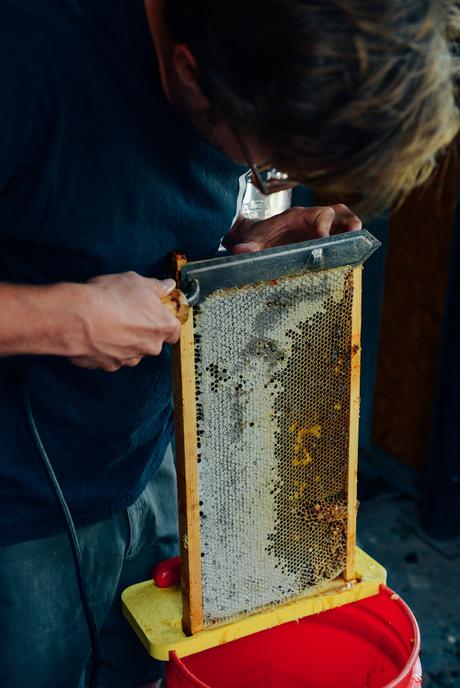
In addition to honey’s sweet appeal, the Urban Farmer’s deeper motives for becoming a beekeeper stem from his passion for the environment. When I first introduced him as a beekeeper in the Meet a Beekeeper post, he explained his desire to defend the honey bee:
“I started to read more about the negative effects of GMO’s (Genetically Modified Organisms) and monocultures (growing a single crop, for a long time in vast areas, which prevents a diverse, year-round diet for bees and simultaneously depletes soil nutrients). The link between bee colony collapse [bees disappearing] and GMO’s seemed so obvious. Bees are dying, and people act as if it’s a big mystery, but if you look at the flaws of the industrial agricultural system, there’s an easy solution: support local honeybees. I chose to dive in completely and become a beekeeper.”
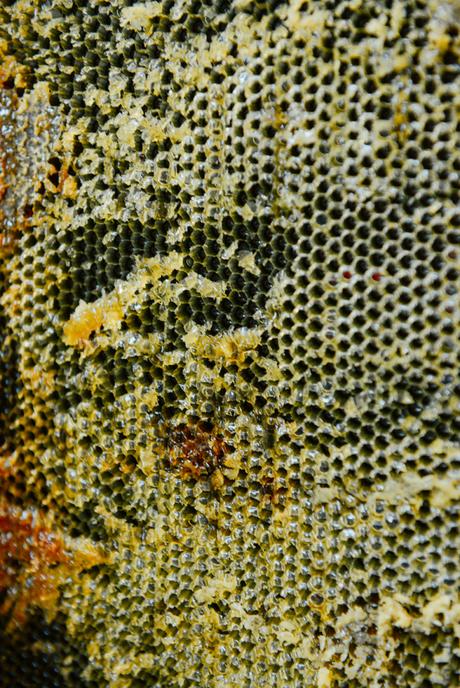
Throughout his fledgling beekeeping efforts, the honey was always off limits for us. He had to reserve the liquid gold for the bees, especially as the colder months approached. However, this year his hives have been flourishing, which meant there was sweetness to be shared. This also meant he was one step closer to his Pooh Bear aspirations! The honey extraction process merited a spotlight! I still have much to learn about bees, so who better to explain this exciting process than the Urban Farmer/the Urban Beekeeper himself!
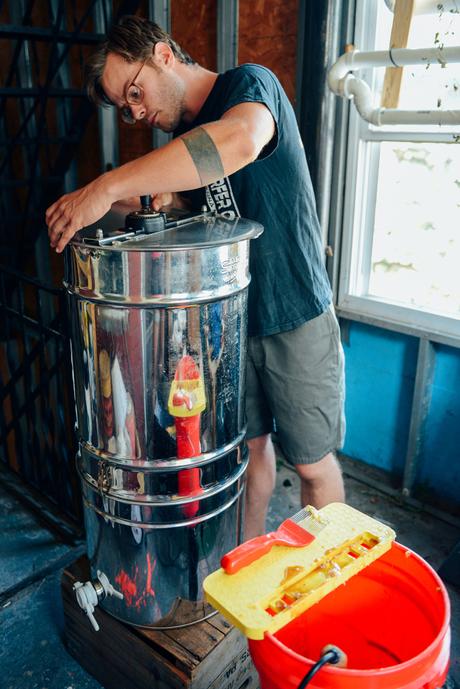
How do you know when it’s time to extract honey?
In our climate in Pennsylvania, we have two major “nectar flows.” This refers to mass blooms of a variety of vegetation. The first nectar flow takes place in early summer, followed by a dearth (a drop in the nectar flow), then again in the early fall when knotweed and golden rod become the major food source for our bees. Generally, beekeepers harvest any excess honey after these flows, making sure to reserve enough honey for the bees to get through the summer dearth and the long winter. During the winter, honey is their only major food source.
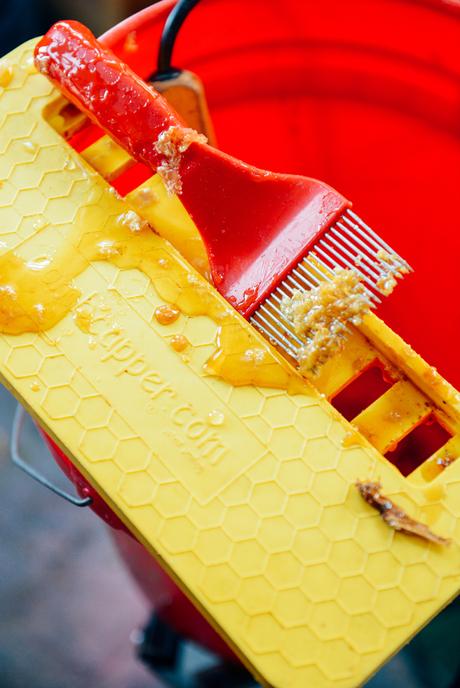
The metal bristles help remove wax and release more honey.
How is the honey extracted from the hive?
The extraction process starts by removing the honey supers from the hive. Supers are smaller hive bodies that are placed on the top of the hive (see diagram). The bees naturally use the larger bottom hive bodies, called brood chambers, to raise their young and store pollen (and some honey too). Instinctually, bees store the honey on top of their young. When the hive has enough honey stores built in the brood chamber, they will start to store honey in the upper supers. At that point, the beekeeper can easily remove the frame of honey with out disturbing hatching eggs.
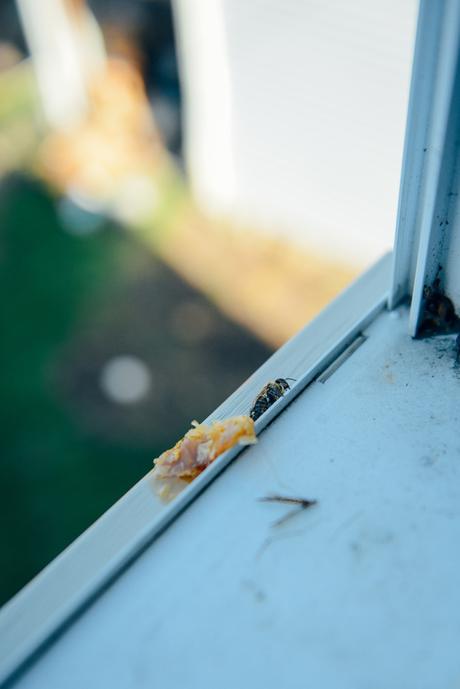
A stowaway!
This, however, does not make it easy to remove bees from the honey supers to transport them for extraction. Some beekeepers use a leaf blower to persuade the bees from the frames or a tried-and-true process of shaking the bees off the frames and securing them in a box as fast as possible, before the bees rush back to their frames. Either way, it’s not an easy or full-proof procedure, and you might discover some stowaways!
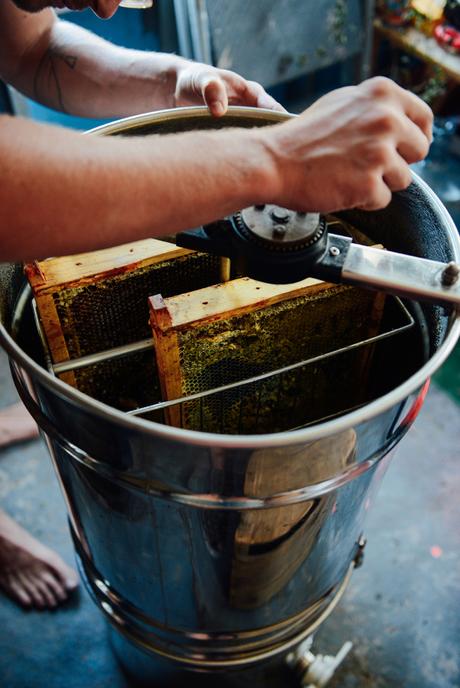
What happens to your hives as the weather becomes colder?
The bees slow down in the cooler weather. They forage less and then not at all in the dead of winter. The queen slows down egg laying, and the bees go into a mode of trying to heat the hive. They detach their wings and vibrate at such a frequency that they can heat the hive through the negative degrees of winter.
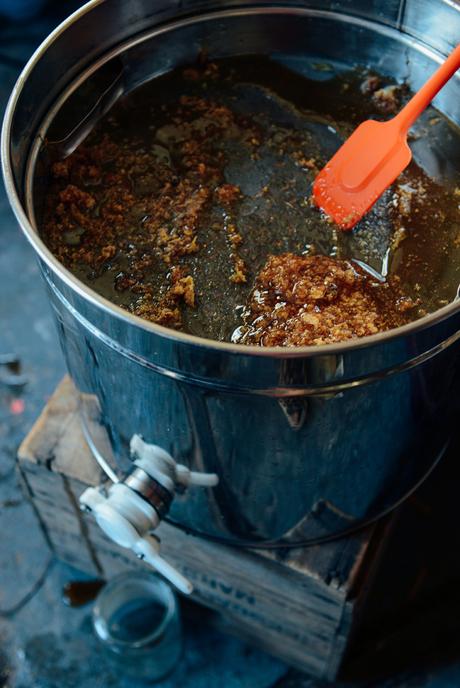
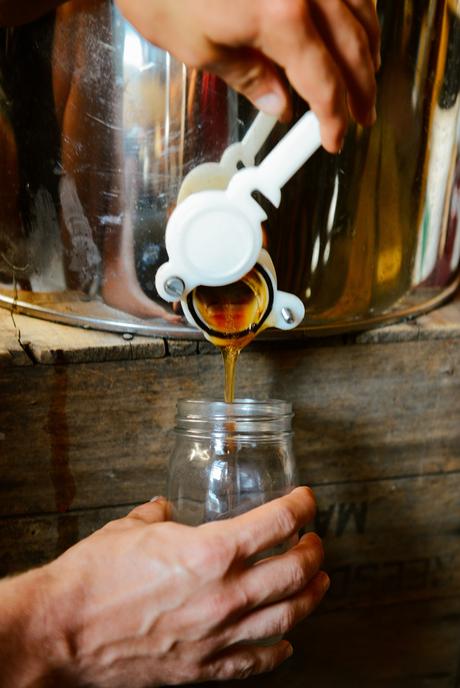
When is the best time to start beekeeping? How does one start beekeeping?
The best time to start a new hive is in early Spring – March or April. Bees are becoming active at that time of year, and they begin the process of regrowing their numbers. Bee packages are available for purchase at this time. This is also the time of year when beekeepers make “splits” (splitting a bee hive into two hives), so it’s a good time to find local bees for sale. If you are interested in starting a bee hive, I highly recommend reaching out to Burgh Bees for information on where to find bees, as well as a listing of courses available through the organization. [Burgh Bees has a lot of helpful resources for non-locals too!]
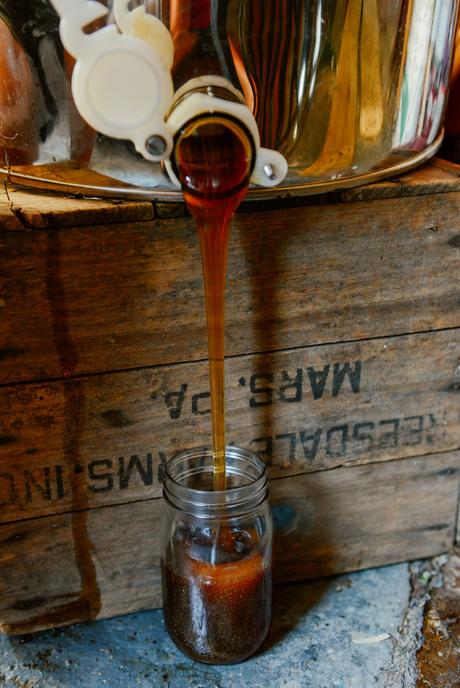
If there’s anything I’ve learned in observing and discussing bees with the Urban Farmer, it’s that beekeeping is a fickle trade. A beekeeper can do everything right, only to discover his bees have fled the hive. Then, sadly, it’s back to the beginning. So when he discovered he could harvest honey from his hives, it was a celebratory moment with an especially sweet reward!

Extracting honey made me appreciate the beekeepers who harvest, store and sell large quantities of the honey. It’s sticky work for sure, and as we cranked the machine beekeepers have surely been using for centuries, we had our doubts. Were three frames worth this rigamarole? Would we salvage any honey, or would it all be stuck to the guts of the apparatus? We of little faith! When we turned the release nozzle, the honey flowed and flowed and flowed!
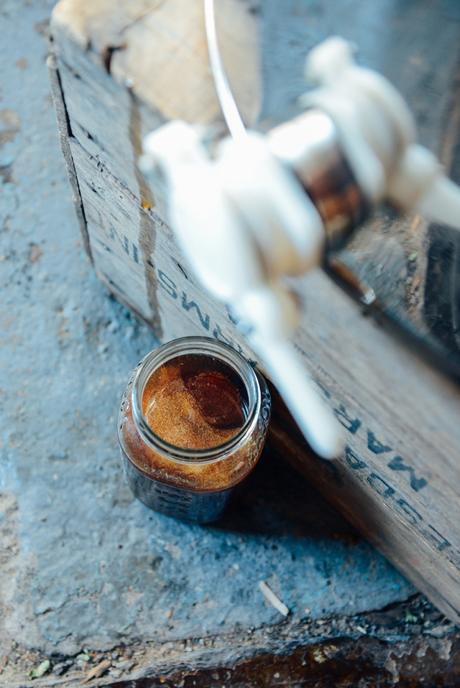
Sometimes my words and my emotions fail to convey my excitement and pride in the moment, so instead, I use my kitchen and my table. I’ve seen up close the ups and downs of tending to the little black and golden creatures. I’ve seen the stings, the swelling and the defeats. However, this pancake brunch was to celebrate the Urban Farmer’s determination, his dedication and nature’s dessert.
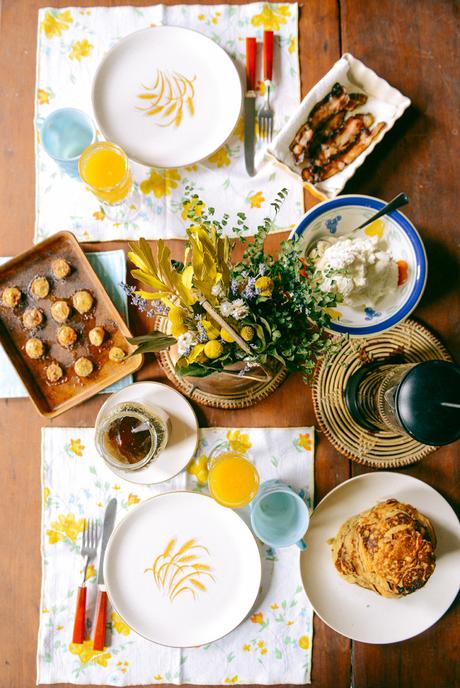
Honey sweetened, whole-wheat pancakes with honey & cinnamon whipped cream and topped with honey roasted bananas – this was a pancake brunch ode to honey!
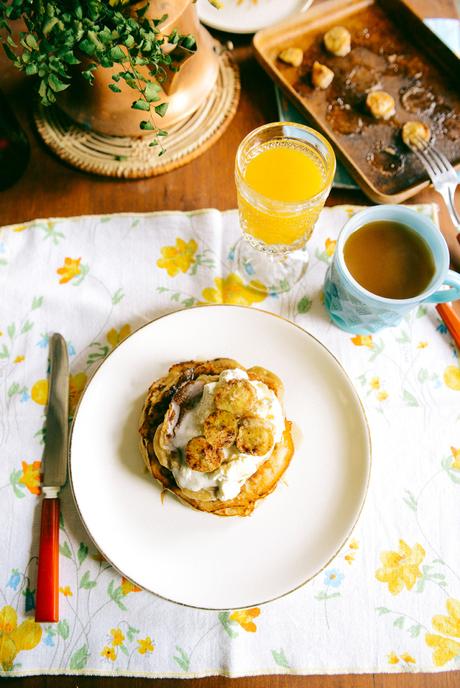
Hopefully the bees’ remaining honey will carry them boldly through winter. Hopefully, the following spring will entice them with its nectar flow, and hopefully, this honey harvesting will become a tradition. For now though, we celebrate each spoonful we have and the progress the Urban Farmer is making on the bee front!

Sweetly,
Quelcy
Whole Wheat Honey Banana Pancakes
w/ Honey Cinnamon Whipped Cream & Honey Roasted Bananas
Note: Pancakes are a great way to use local milk that has just turned, as well as bananas that are over ripened. I used a soured milk for this pancake recipe, and it yielded an extra fluffy pancake and less waste! As always though, exercise caution when using an ingredient past its peak. Alternately, you can use buttermilk.
Whole Wheat Honey Banana Pancakes
yield: Makes approximately twelve 4-inch pancakes.
Ingredients
6 Tablespoons (3/4 stick) organic, unsalted butter
1 1/2 cups organic whole-wheat pastry flour (recommended: Bob’s Red Mill)
2 1/2 teaspoons baking powder
1/4 teaspoon salt
2 very ripe organic bananas, peeled
1 cup soured local milk (or buttermilk)
2 eggs (organic/cage-free)
2-3 Tablespoons local honey
1/2 teaspoon pure vanilla extract
Directions
Cut the butter into 3 equal pieces. Set one piece aside, and melt the remaining 2 of the pieces in a saucepan over medium heat.
In a bowl, whisk together the flour, baking powder and salt until well blended.
Put the bananas in a small bowl. Mash with a fork or a pastry blender until creamy.
In the bowl of a stand mixer, combine the mashed bananas with the milk, eggs, honey and vanilla until well blended.
Pour the banana mixture and the melted butter into the flour mixture. Mix gently with a rubber spatula until the batter is just blended. The batter should still be a little bit lumpy.
Put a griddle or skillet over medium heat until hot, and set the oven to warm. To test if the griddle is hot enough, flick a drop of water onto it. It is ready if the drop dances quickly and evaporates.
Put half of the remaining butter onto the griddle and spread it with a metal spatula. Drop the batter by 1/2 cupfuls onto the griddle.
Cook until a few holes form on top of each pancake and the underside is golden brown, about 2 minutes. Flip the pancake, and cook until the bottom is golden brown, and the top is puffed, 1 to 2 minutes more.
Using the spatula, transfer the pancakes to a pan in the oven to keep warm until ready to serve.
Repeat with the remaining batter.
Serve the pancakes while still hot with Cinnamon Whipped Cream (recipe below), honey or maple syrup and Honey Roasted Bananas (recipe below).
Honey Cinnamon Whipped Cream
Ingredients
1 cup organic heavy cream, chilled
1-2 teaspoons pure vanilla extract
1-2 teaspoons cinnamon, to taste
1-2 Tablespoons local honey
Directions
Pour heavy cream and vanilla into the chilled mixing bowl of a stand mixer.
Beat on high speed.
Slowly add the cinnamon, one teaspoon at a time, tasting along the way to achieve desired spice level.
Slowly add the honey. Pause the mixer, and use a spatula to scrape down the bowl to ensure the honey is incorporated.
Continue beating until stiff peaks form. Keep chilled until ready to serve.
Roasted Bananas
serves 2
Ingredients
1-2 ripe bananas, sliced
organic, unsalted butter or coconut oil for pan
honey
cinnamon
nutmeg
cardamom
Directions
Preheat the oven to 425°F.
Use butter or coconut oil to grease a small baking pan or skillet. Arrange the banana slices on the pan.
Top each banana slice with a small dollop of honey, and then sprinkle all of the slices with the spices to your liking. Note: Use less of the nutmeg and cardamom, as they are stronger flavors.
Bake for approximately 10 minutes, until the bananas are slightly caramelized. Note: Bake for less if you want a firmer texture.
Serve warm.
Enjoy!


